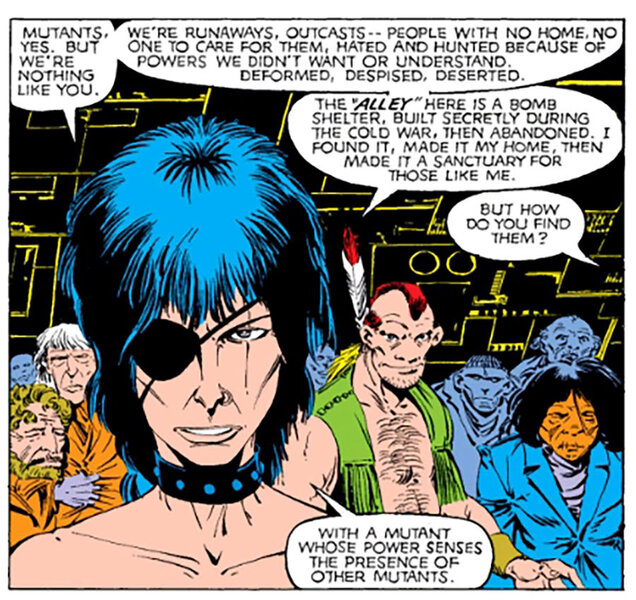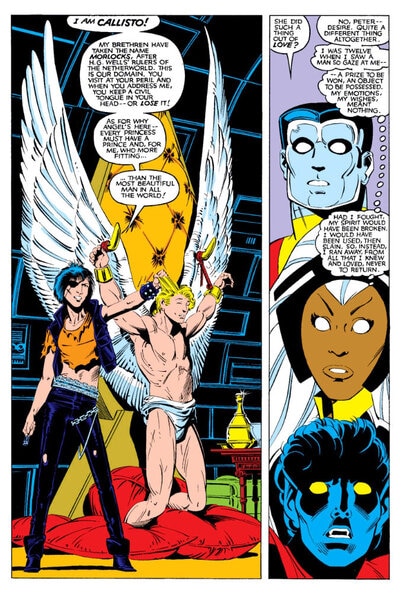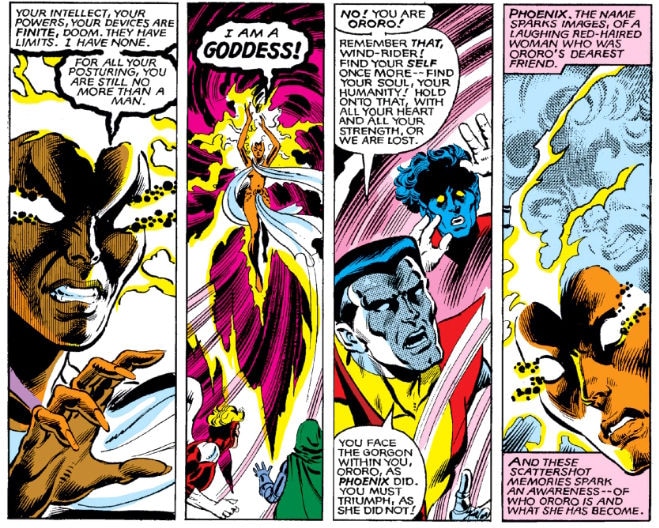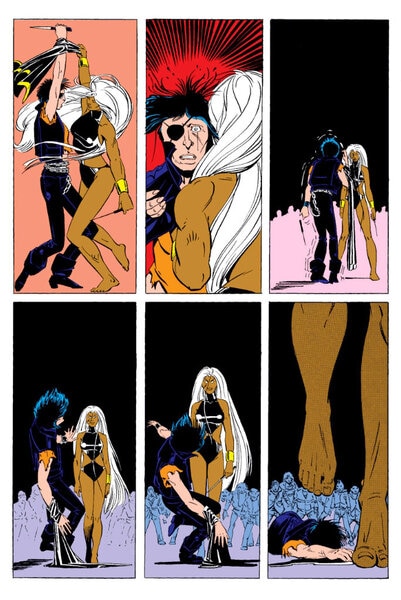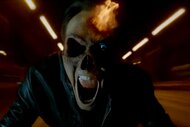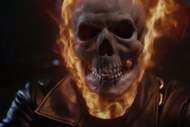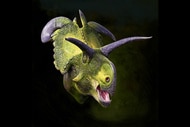Create a free profile to get unlimited access to exclusive videos, sweepstakes, and more!
Storm vs. Callisto, and the uneasy alliance of heroes and villains
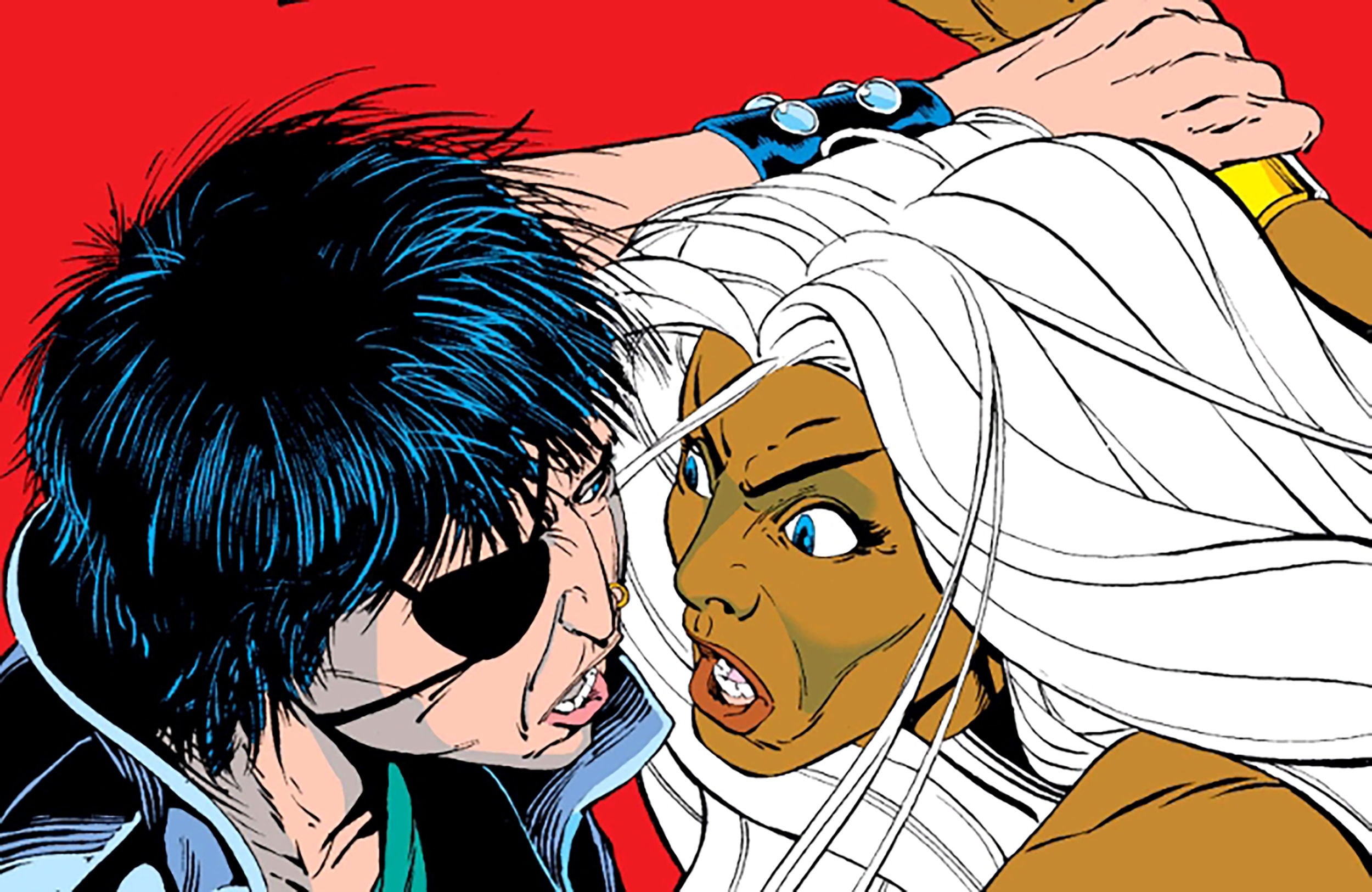
When we think of great antagonists in fiction, we often think of characters like Moriarty, Doctor Doom, or Darth Vader. These characters are memorable not because of how specifically awful they are, but because they show the other side of the mirror, reflecting the dark side of our heroes. For Holmes, Moriarty was a man who had his equal intelligence, charm, and arrogance but none of his morality. The Fantastic Four are strong because they are a family while Doctor Doom is strong because he is alone. Darth Vader, who was a young idealist and then twisted to become the enemy of all life, which shows us what Luke Skywalker might become if he fails to keep his moral compass in check.
The greatest villains are not the ones who are “the most evil.” They are the ones who teach us more about the protagonist and add an extra layer of complexity to our heroes. In genre, what we look for in our “bad guys” is someone who offers legitimate criticism of the supposedly infallible ethics of the “good guys.” By questioning and challenging those preconceived norms, they make our heroes stronger.
That brings us to the story of Callisto and Storm, two women who met one another under tense circumstances, fought viciously, but ultimately came to the sort of understanding we seldom see between heroes and villains in genre. It’s indisputable that Storm and Callisto have both been profoundly affected by one another, to the point that it would be impossible to tell either of their stories without mention of the another. They each underwent a rebirth as a result, Callisto quite literally, but with Ororo in a more nuanced and complex way that revealed much of our working knowledge of her surprisingly troubled inner life.
Hate at First Sight
The X-Men had been through quite a bit by the time they met up with Callisto and the Morlocks in an abandoned bomb shelter the NYC sewer systems. Storm joined the team with Nightcrawler, Thunderbird, Wolverine, and Colossus in Giant-Sized X-Men, also her first appearance. At the time, she was living in an unspecified place in the countryside of Africa (vague, we know). She was worshipped as a god by the locals. Professor Xavier called her out on this, asking her if she wouldn’t like to get back to developing her life as a woman and a mutant rather than allowing others to be deceived into worshipping her by her displays of strength and power. She conceded that he was right, and so she became one of the X-Men.
The Dark Phoenix Saga had come and gone, and Storm had effectively died while in deep space with the Brood, which had led to a bizarre temporary transformation into a telepathic space whale as she attempted to reform herself into the Ororo Munroe we all know and love. As if that wasn't enough, Storm had gone head to head with Dracula, nearly transforming permanently into a vampire. Thorough it all, her status as a somewhat naive pacifist was growing increasingly more and more nuanced.
Then, we have Callisto.
Writer Chris Claremont was a huge sci-fi fan, as well as being the main writer of one of the most important genre franchises of the last century. As such, the first appearance of Callisto in Uncanny X-Men #169 combined elements of many notable science-fiction concepts. The Morlocks, the subterranean creatures that existed in H.G. Wells' The Time Machine, showed us the dark side of the utopia he had built within the story. While the others are beautiful and living an aesthetically pleasing life of luxury, the Morlocks are kept underground and they suffer, in poverty. This is an obvious class analogy, and it extends also to the X-Men’s Morlocks. They despise the X-Men and everyone who lives on “the surface world” because, frankly, it is a side effect of their visibility that forces the Morlocks to live in shame and squalor.
Also, this comic was released in 1983, many years after the release of the cult sci-fi film Barbarella, and much of the visual style of this story is lifted from this iconic movie. Callisto and her obsession and exploitation of Warren Worthington, the Angel, is a direct analog of Barbarella characters Pygar and the Great Tyrant. While Barbarella was attempting to save her love interest, Storm’s motivations are notably deeper. She is attempting to save her teammate, while coming to grips with her need to change her own previously unshakable morality lest she herself perish. She has been questioning and doubting herself for some time and Callisto might as well be a physical manifestation of those doubts. She is triggered by Callisto’s treatment of Warren as a possession. From the very first moment they lay eyes on one another, this fight with Callisto is specifically personal in ways that it would not be with any other member of the X-Men.
Who Is Storm?
Ororo Munroe is forever a more interesting character than she is given credit for. Her outer appearance of dominance over her own conflicting emotions belies an often troubled inner life. Questions of morality are constantly at the forefront of Ororo’s mind, and her own ethical compass changes and shifts as time goes on in some surprising ways. This is to say that, alongside characters like Jean Grey, Forge, or Wolverine, Ororo will inevitably appear to be calm and in control, but even the fact that she has a strong tendency to surround herself with volatile personalities while remaining personally serene gives us more insight to her character than is generally acknowledged. For Ororo, much of what she is attracted to in others is the actualization of passions that she often feels compelled to hold at bay. This manifests itself in ways big and small.
Her attraction to leaders, in the cases of Doom and T’Challa, is based on understanding the importance of appearing in absolute control of oneself, something that has long been considered a necessary trait in royalty. Not for reasons of heritage, Ororo understands this compulsion because she has been forced to maintain the same control of her own emotions and reactions, not because it might lead to public criticism, but because if she slips she can easily destroy entire ecosystems and cause mass deaths.
When Doom imprisons Storm in a crystalline shell in Uncanny X-Men #147, Storm lashes out at him, losing control of herself completely. It is only the remembrance of her best friend Jean Grey, who had so recently (apparently) fallen to the compulsions of the Phoenix, that calms Storm and allows her to regain her composure after very nearly killing Doctor Doom. Her outer calmness is in direct conflict with a passionate and troubled inner world, and that is one of the most important things to remember if you are to understand who Storm is as a character.
The Fight
As the X-Men fear that all hope is lost and that they will lose not just Angel but perhaps also their own lives, Storm becomes infuriated with her own inner conflict and with Callisto, and she challenges the Morlock leader in a fight to the death. Callisto underestimates Storm and brashly accepts, scoffing at her beauty and her inability to use her powers effectively within the confines of the tunnels under NYC.
The battle begins. The two are evenly matched for a time, but Callisto fights with the knowledge that Storm will not compromise her pacifism to win the fight. This is where Callisto, the X-Men, the audience, and even Storm herself, are all dead wrong. Storm stabs Callisto in the heart, watches her drop to the ground, and walks away.
Storm claims leadership of the Morlocks, but this moment of triumph gives us great insight to Storm’s true weakness. In the following months, she fails to check in on the Morlocks at all, essentially abandoning them and leaving them without leadership or direction. She focuses on her own problems, and her leadership of the X-Men, only later realizing that her neglect has allowed the malicious mutant Masque to take control of the Morlocks, causing them to rise up again as a much more dangerous threat later.
After Callisto returns from the dead and does some serious soul searching, Storm returns leadership to her with an apology to all the Morlocks for failing them so profoundly. She and Callisto form an uneasy alliance that ultimately blooms into intricate respect and even friendship. This is unbelievably rare in the world of genre or even real life, and it gives us an interesting view on how two good characters can be at odds, make mistakes, and come villainize one another. For this reason, the feud between Storm and Callisto is one of the most complex and fascinating relationships in all of fiction.
In the end, Callisto is a perfect nemesis, created explicitly to seed doubt for Storm within the confines of her own complex morality and who remains hugely important to our understanding of Ororo and her evolution. No longer a pacifist, Storm would go on to change her look drastically to what we now refer to as her “punk” look, and it took some time for her to regain her sense of inner stability. When that process finally began, it was her forgiveness of Callisto and her acknowledgement of her own mistakes that paved the way for her to become the hero we have today.

